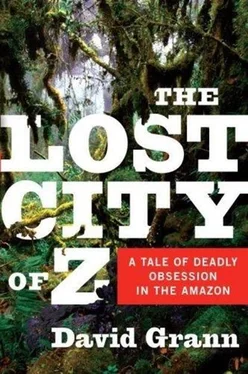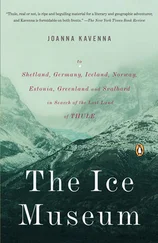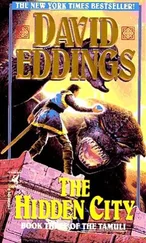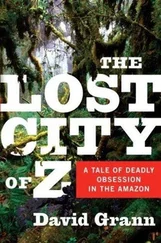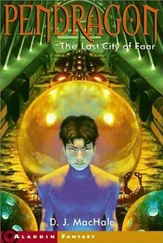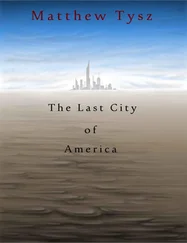Perhaps most startling is evidence that Indians transformed the landscape even where it was a counterfeit paradise-that is to say, where the soil was too infertile to sustain a large population. Scientists have uncovered throughout the jungle large stretches of terra preta do Indio, or “Indian black earth”: soil that has been enriched with organic human waste and charcoal from fires, so that it is made exceptionally fertile. It is not clear if Indian black earth was an accidental by-product of human inhabitation or, as some scientists think, was created by design-by a careful and system atic “charring” of the soil with smoldering fires, like the Kayapós' practice in the Xingu. In either case, many Amazonian tribes appear to have exploited this rich soil to grow crops where agriculture was once thought inconceivable. Scientists have uncovered so much black earth from ancient settlements in the Amazon that they now believe the rain forest may have sustained millions of people. And for the first time scholars are reevaluating the El Dorado chronicles that Fawcett used to piece together his theory of Z. As Roosevelt put it, what Carvajal described was without question “no mirage.” Scientists have admittedly not found evidence of the fantastical gold that the conquistadores had dreamed of. But the anthro pologist Neil Whitehead says, “With some caveats, El Dorado really did exist.”
Heckenberger told me that scientists were just beginning the process of understanding this ancient world-and, like the theory of who first populated the Americas, all the traditional paradigms had to be reevalu-ated. In 2006, evidence even emerged that, in some parts of the Amazon, Indians built with stone. Archaeologists with the Amapa Institute of Scientific and Technological Research uncovered, in the northern Brazilian Amazon, an astronomical observatory tower made of huge granite rocks: each one weighed several tons, and some were nearly ten feet tall. The ruins, believed to be anywhere from five hundred to two thousand years old, have been called “the Stonehenge of the Amazon.”
“Anthropologists,” Heckenberger said, “made the mistake of coming into the Amazon in the twentieth century and seeing only small tribes and saying, ‘Well, that's all there is.' The problem is that, by then, many Indian populations had already been wiped out by what was essentially a holocaust from European contact. That's why the first Europeans in the Amazon described such massive settlements that, later, no one could ever find.”
As we walked back into the Kuikuro village, Heckenberger stopped at the edge of the plaza and told me to examine it closely. He said that the civilization that had built the giant settlements had nearly been annihilated. Yet a small number of descendants had survived, and we were no doubt among them. For a thousand years, he said, the Xinguanos had maintained artistic and cultural traditions from this highly advanced, highly structured civilization. He said, for instance, that the present-day Kuikuro village was still organized along east and west cardinal points and its paths were aligned at right angles, though its residents no longer knew why this was the preferred pattern. Heckenberger added that he had taken a piece of pottery from the ruins and shown it to a local maker of ceramics. It was so similar to present-day pottery, with its painted exterior and reddish clay, that the potter insisted it had been made recently.
As Paolo and I headed toward the chief's house, Heckenberger picked up a contemporary ceramic pot and ran his hand along the edge, where there were grooves. “They're from boiling the toxins out of manioc,” he said. He had detected the same feature in the ancient pots. “That means that a thousand years ago people in this civilization had the same staple of diet,” he said. He began to go through the house, finding parallels between the ancient civilization and its remnants today: the clay statues, the thatched walls and roofs, the cotton hammocks. “To tell you the honest-to-God truth, I don't think there is anywhere in the world where there isn't written history where the continuity is so clear as right here,” Heckenberger said.
Some of the musicians and dancers were circling through the plaza, and Heckenberger said that everywhere in the Kuikuro village “you can see the past in the present.” I began to picture the flutists and dancers in one of the old plazas. I pictured them living in mound-shaped two-story houses, the houses not scattered but in endless rows, where women wove hammocks and baked with manioc flour and where teenage boys and girls were held in seclusion as they learned the rites of their ancestors. I pictured the dancers and singers crossing moats and passing through tall palisade fences, moving from one village to the next along wide boulevards and bridges and causeways.
The musicians were coming closer to us, and Heckenberger said something about the flutes, but I could no longer hear his voice over the sounds. For a moment, I could see this vanished world as if it were right in front of me. Z.
I AM GRATEFUL to so many people who contributed to this project. Fawcett's granddaughter Rolette de Montet-Guerin and his great-granddaughter Isabelle generously allowed me access to Fawcett's diaries, letters, and photographs. Percy Fawcett's ninety-five-year-old nephew, Dr. Peter Fortescue, gave me a copy of his unpublished memoir; he vividly recalled when he was a boy and saw Percy and Jack Fawcett at a farewell dinner before they journeyed to the Amazon. Two of Henry Costin's children, Michael and Mary, shared reminiscences of their father and let me read his private letters. Ann Macdonald, Raleigh Rimell's cousin once removed, provided me with his last letters home. Robert Temple, who is Edward Douglas Fawcett's literary executor, and Robert's wife, Olivia, shed light on the marvelous life of Percy Fawcett's older brother. Commander George Miller Dyott's son Mark and Dr. Alexander Hamilton Rice's nephew John D. Farrington each furnished crucial details about their relatives. James Lynch told me about his own harrowing journey.
I am also indebted to a number of research institutions and their incredible staffs. Particularly, I want to thank Sarah Strong, Julie Carrington, Jamie Owen, and everyone else at the Royal Geographical Society; Maurice Paul Evans at the Royal Artillery Museum; Peter Lewis at the American Geographical Society; Vera Faillace at the National Library of Brazil; Sheila Mackenzie at the National Library of Scotland; Norwood Kerr and Mary Jo Scott at the Alabama Department of Archives and History; and Elizabeth Dunn at the Rare Book, Manuscript, and Special Collections Library at Duke University.
I could never have made it out of the jungle without my wonderful and good-humored guide, Paolo Pinage. I am also grateful to the Bakairí, Kalapalo, and Kuikuro Indians for welcoming me into their settlements and talking to me not only about Fawcett but their own rich cultures and history as well.
To learn about Amazonian archaeology and geography, I drew on the wisdom of several scholars-Ellen Basso, William Denevan, Clark Erick-son, Susanna Hecht, Eduardo Neves, Anna Roosevelt, and Neil White-head, among them-though they should not be held accountable for my words. I would like to pay special tribute to James Petersen, who was murdered in the Amazon not long after we spoke, depriving the world of one of its finest archaeologists and most generous souls. And, needless to say, this book would have had a much different ending had it not been for the archaeologist Michael Heckenberger, a brilliant and fearless scholar who has done so much to illuminate the ancient civilizations of the Amazon.
William Lowther, Misha Williams, and Hermes Leal have all done prodigious research on Fawcett and patiently answered my questions.
Читать дальше
Конец ознакомительного отрывка
Купить книгу
